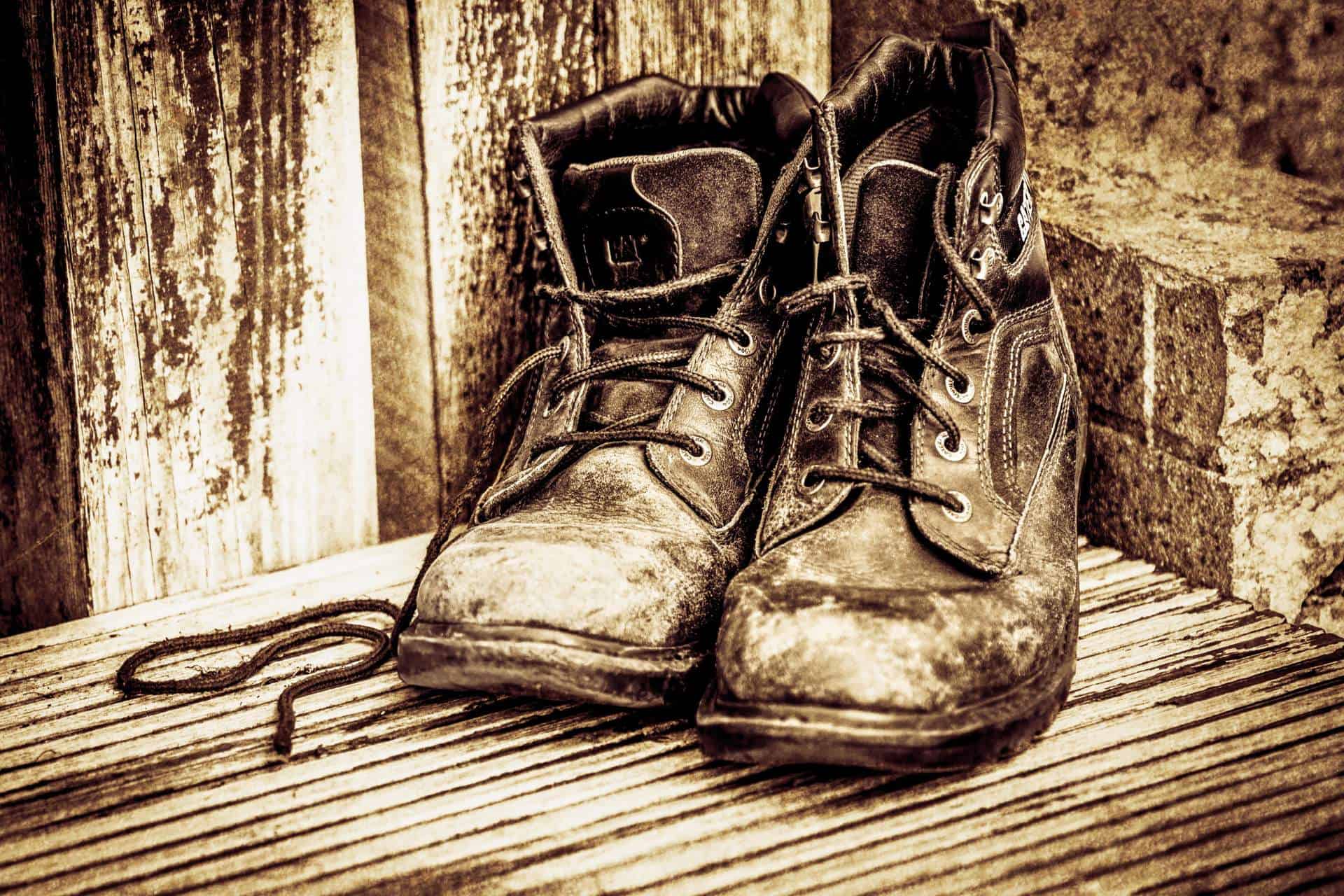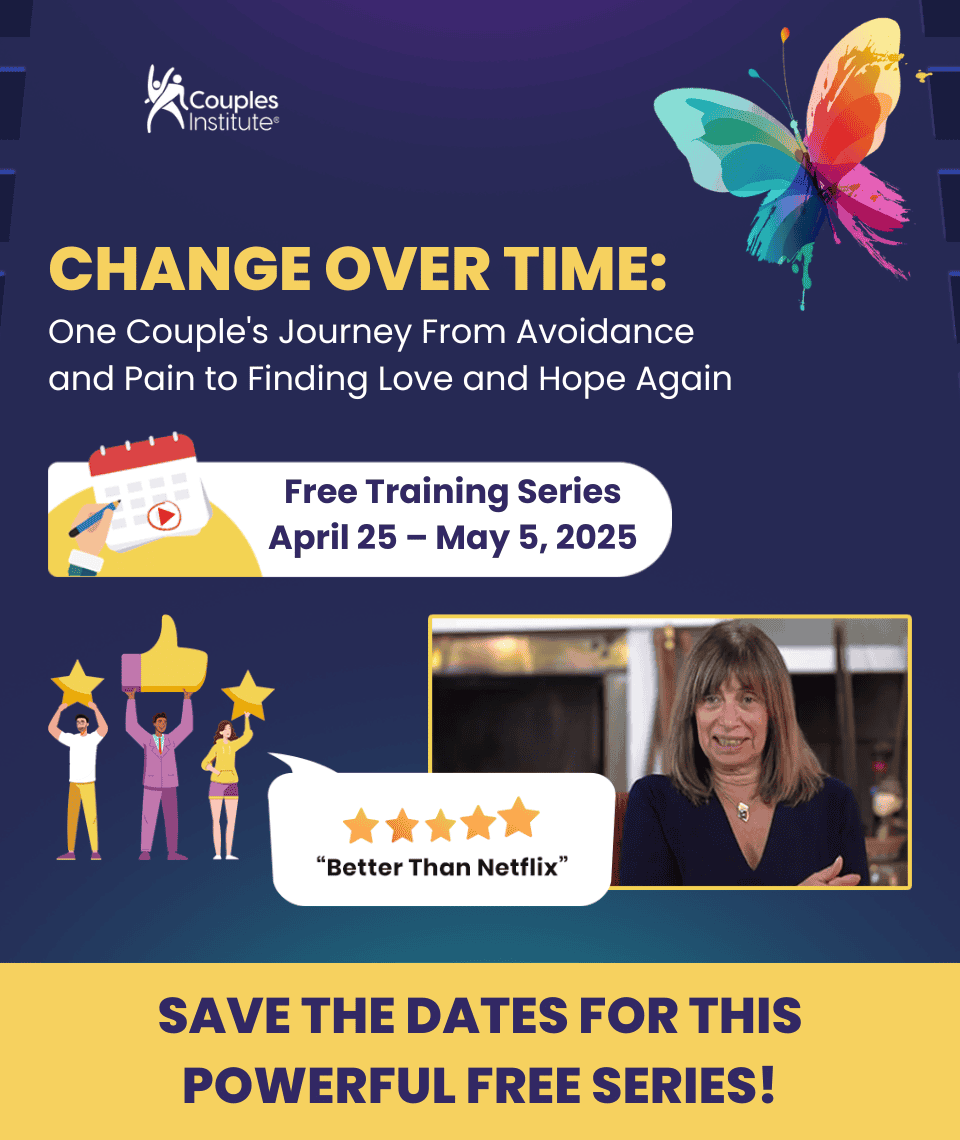It’s kind of a paradox that most people come to us as therapists and coaches for answers, but our real job is to ask questions. I’ve just read an inspiring book about asking questions, with a very touching story to illustrate their importance.
Clients want to know answers to life’s difficult questions – how to handle life changes. Why is my partner being so impossible? What can I do about chronic pain? How should my wife and I navigate these parenting problems? When will we get past this betrayal? How can I possibly juggle my career with all the needs of my spouse, children, and aging parents?
Clients want answers, and yet, questions are the foundation of what therapists and coaches offer their clients.
In every session you balance giving feedback and insights vs. asking perspective-shifting questions. Those questions are what prompt clients to find their own answers, and often they can be more important than our suggestions.
Here’s an example of the transformative power of the right questions. It’s from a colleague of mine, Dr. Bonnie Bernell, who helped Linda and Dan change their relationship with a few targeted questions.
Linda and Dan came to my office full of pain and grief at what they imagined was the last step, the last possibility before ending their relationship. After thirty years together, they were having a version of a fight that no therapist had been able to impact, and they had tried many therapists. Linda said Dan had no respect for her and didn’t hear or care what she said. Her response was to keep talking to him to get what she needed. Dan said Linda was controlling and demeaning; his response was to withdraw. A frequent focus of their fights was a grungy pair of shoes that Dan always wore, even on celebratory occasions.
Rather than repeat other efforts to help them, from skilled, well-meaning, and frequently excellent therapists who I know had helped many other similar clients, my approach was to try another way, to ask a specific question that might get each of them to look at what was happening in a different way.
My questions to each of them were about “treasures that matter.” Are these shoes treasures to you? What criteria do you use to put something on a treasure list or call something a treasure? Does something that is treasured need to be positive? Can something negative and possibly embarrassing be a treasure, too?
These questions can be annoying, disorienting, even destabilizing to one partner, and seemingly easier for the other. However, what happened was helping each of them be curious; a space opened between them that shifted the conversation.
Obviously, to Linda the shoes were not treasures. Of course, to Dan, the shoes were something he wanted to wear often. To Linda, those shoes would never be positive, she said.
And then, to the question that made a difference for Linda and Dan: Dan, whose instinct was to shut down, had yet to have a forum to look at why these seemingly negative, even embarrassing, shoes were a treasure to him. He told the following story.
Dan came from a low-income family. The first pair of new shoes he had ever owned was given to him by his parents when he graduated from high school. He went to a military academy; at one of the graduation events, he got special permission to wear those shoes that were somewhat worn.
At his marriage to Linda, he insisted on wearing those now-very-tired-looking shoes. That began a decades-long battle between Dan and Linda over when and where he would wear those increasingly dreadful shoes. When each of their sons was born, Dan wore those shoes to the hospital to greet the new child. Dan insisted on wearing those shoes when each of his children got married.
They had couples therapy over those grungy shoes. Linda felt Dan was uncaring to her when he would not stop wearing those shoes on important occasions. Dan felt Linda was mean and judgmental. More therapy. All to no avail. When Dan was allowed to tell his story about those shoes, he expressed thoughts he did not even realize he had.
Those grungy shoes were a meaningful expression of support from his parents, shoes that made him remember his parents’ sacrifices and their expression of love for him. Until that moment, he had never been able to tell his wife the power of those shoes. By the end of his story, Linda was in tears. For decades the couple had fought. Answering just a few targeted questions changed everything.
Bonnie Bernell, Ed.D. and Cheryl Svensson, Ph.D. have written a new book Uncovering Treasures That Matter: A Therapist’s Guide to Asking the Right Questions. It includes questions for writing on 50 different themes, a veritable “treasure trove” of questions that will help deepen or broaden or create inspiration to help liberate the struggle.
Use the comment section below to write about some questions that have worked well in your practice. Or tell us a story like Bonnie’s.


 We respect your privacy.
We respect your privacy.




Question that has mattered. “ will you survive? How will you be and how do you know. ? If he leaves you? If the divorce happens, if your parents disown you, if you dont get into med school? whateveer the key fear that the client appears with, if forcedto see that they will survive, are strong , will find a way, etc, defuses the fear of the infant, chikd and even adult of death or dying. Not so much a couples question, but an individual one. In the shoe story – it would be if his shoes were gone, would his memory of his parents love and sacrifice still be there – but that is not the way i would use the “ survival” question in this case.
Muy bueno
Something Pete wrote elsewhere recently has made me think of some new questions I may want to ask. He said that a couple relationship is the only interdependent and nonhierarchical relationship we ever have in our life, and I agree. It follows then that the couples we see have usually, if not always, lacked role models for this, given what they witnessed in their family of origin. So, questions like: Did your father’s insults to you result in an improvement in your relationship with him? Do you think that will work in your relationship with your wife/husband? Can you speak up for yourself without speaking down to your husband/wife?
Wow, this was very insightful and helpful. I love this touching example of uncovering deeper meanings behind a conflict-causing attachment. Once I understood that my husband’s succumbing to ex-wife’s demands was fueled by his commitment to support the mother of his children I was able to hold more respect for him.
I really value the emphasis on asking the meaningful questions, but I also find this story incomplete. Although I understand how important the value of Linda’s softening is, I worry that readers will leave with the belief that “the relationship was saved,” and that that was the point. Experience tells me otherwise: that Linda could leave that session more determined to leave the relationship, now understanding a kind of “bottom line” of meaning about why those shoes are a treasure to Dan. I have seen this dynamic before in therapeutic reporting, and have a worry that it could have a sexist underpinning: that Linda’s association with battered shoes and disrespect is somehow less sacred than Dan’s attachment to the only narrative presented about the shoes. Couldn’t Linda have an equally compelling narrative about her association between fine shoes and respect? And we don’t know if that story would soften Dan, do we?
I love the way you’ve framed this Barbara and it’s helped me to clarify a subtle unrest in me that I couldn’t quite grasp on reading it first time. I hear many accounts (frustrations) about similarly persistent couple fights around things that are unsentimental – there’s a pretty well known article around a man who was regretful – AFTER his wife left – for not listening to his wife’s requests for him to put his glass straight into the dishwasher after use. His ‘story’ / attachment to not doing what he was asked was that he wasn’t finished with it yet. I have plenty of my own examples around asking for simple practical daily things that take .01 effort at at the time.
Disagreements like these can be hard to get through as it’s easy for the complainant to be accused of being fussy/ petty when actually it’s a straightforward request with a straightforward reason and for it to be consistently ignored (I think) is a sign of disrespect, and can smack of sexist ideas. I love that John Gottman and Terry Real believe it’s more than ok to bring our complaints and expect to have them heard.
Your perspective points to respect for TWO stories. In my work as a court based child custody mediator, I learned this early on. You also spotlight unconscious (sexist) bias. As I end my comment, a book by Clint one of my instructors, comes to mind; “Give In or Give Up.” Is there a way both can give in?
Asking about what importance or value certain behaviors have for a client that seemingly appear negative on the surface to themselves and those around them.
Very informative. Thanks
As Linda was in tears so was I.
Pete, you have indeed unearthed a precious treasure in using great questions to understand that “Those grungy shoes were a meaningful expression of support from his parents, shoes that made him remember his parents’ sacrifices and their expression of love for him.”
I also agree with Barbara below, about the need to unpack Linda’s narrative (about the shoes) as being equally as important as the need to unpack Dan’s narrative about the shoes. ie. What does it means to Linda that Dan insists on wearing the shoes despite her objections, and where that resonate in her family of origin. Where else has she felt unheard or dismissed in her early life? Both narratives need to have equal importance in order to demonstrate the complementary patterns at play within the relationship.
Another great book, Change your Questions, Change your Life, by Marilee Adams (and the accompanying workbook), empahises the importance of asking open questions rather than closed questions (to which you can answer yes or no) and moving from a “Judger” mindset to a “Lerner” mindset by asking questions.
For example, you might ask Dan any of the following, “What about these shoes makes them treasures to you? What are you aware of that triggers you to think about putting on these shoes? What are you feeling at that time? What do you do when you experience these thoughts and feelings? How does Linda respond when you behave in this way? What do you tell Linda about the need to wear these shoes? If you say nothing, what stops you from sharing your thoughts and feelings about the shoes? How familiar is this story from your childhood? What do you think Linda might be thinking and feeling when you wear the shoes? What story might she be telling herself when you wear the shoes? What does she do as a result of these thoughts and feelings? What questions might you ask Linda in order to understand her experience and bring you two closer together?
You might ask Linda any of the following questions (or others), “What happens for you when Dan wears the shoes? “What feelings come up for you? What thoughts comes up for you? How do you respond to theses thoughts and feelings? What story do you tell yourself about Dan wearing the shoes? How familiar is this story from your childhood? How do you respond when this pattern starts to play itself out? What are you assuming about this situation? What might you say or do when you see Dan you reaching for the shoes? How can you share with Dan your thoughts about the shoes in a caring and respectful way? What could you say or do to bring Dan closer to you?” etc etc.
PS. I’ve just ordered “Uncovering Treasures that Matter”. Thanks for the recommendation, Pete.
Very touching and eye opening. I ordered the book. Thanks Peter
Thank you, Peter! I instantly bought the book you suggested.
I can relate, in a way. A client of mine was having trouble speaking in public to the point of severe stuttering. After a ‘draw a person’ exercise I realized the size of the character depicting my client was about half of the size of the other (male) character depicted in the drawing. I asked: ‘Why age is this small person here?’. ’13’, she said. ‘What happened to her?’, ‘Nothing’, she said. ‘What happened to YOU when you were 13?’. And this is how we unlocked a story of physical abuse, of mistrust in adults, of being terrified in standing full body in front of an adult audience, as if naked and exposed in front of them. Oh, and did I tell you? My client measured 1.80 m (about 5’10”).
Beautiful example, reminiscent of Gottman’s ‘The Dream within the Conflict ‘
Hi Pete, As your audience has wisely added, there is always the rest of the story, the partner’s, or partners’s, process, discovery, and awareness. In Uncovering Treasures That Matter, there are hundreds of questions to help expand this curiosity in productive ways. Finding and asking a clear question often moves each person into greater self awareness, offers the invitation to go deeper within themselves, and show up for a more intimate connection. I hope this book will be useful from day one. And, there are always more questions you, the therapist, create to touch the person you are sitting with each day.